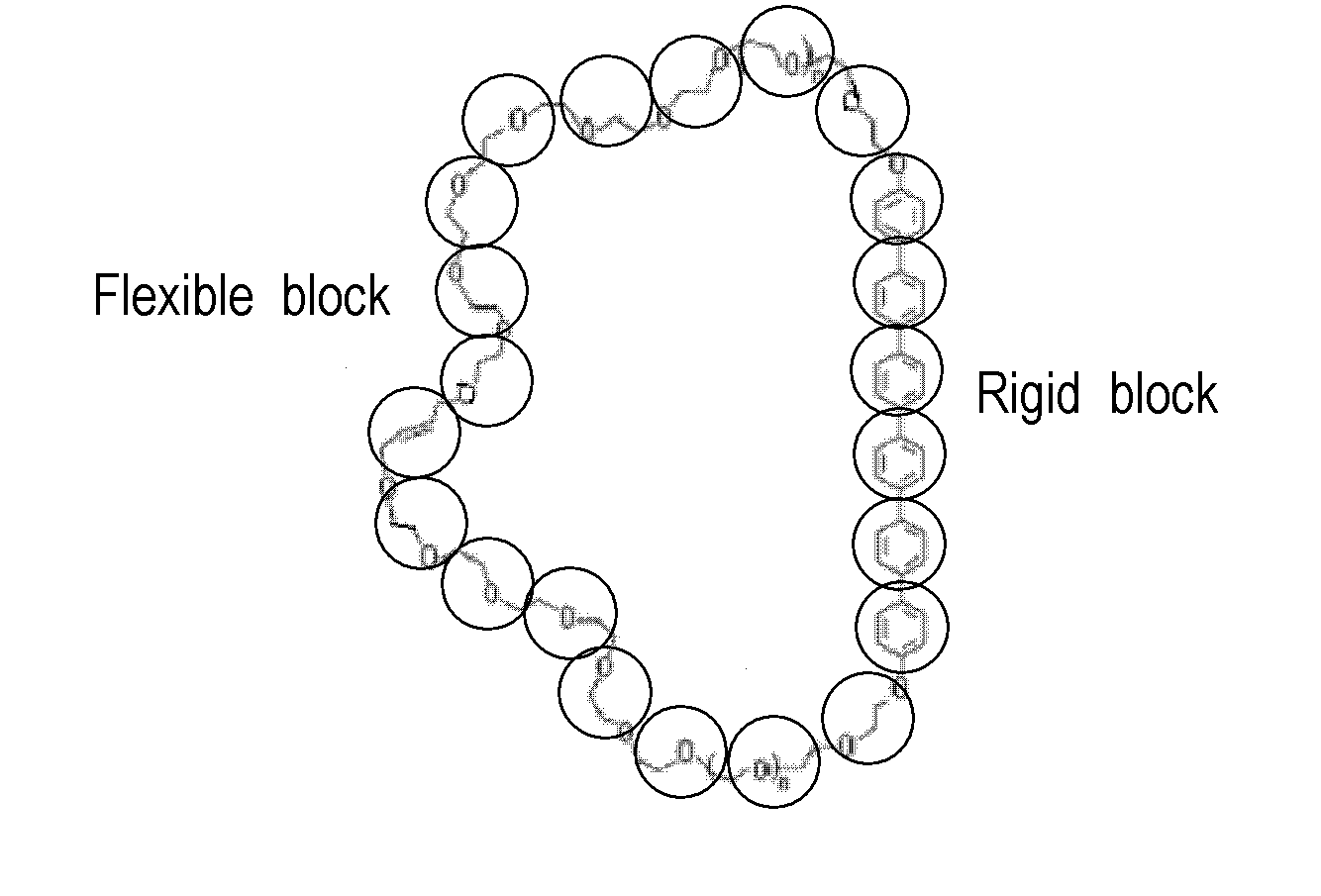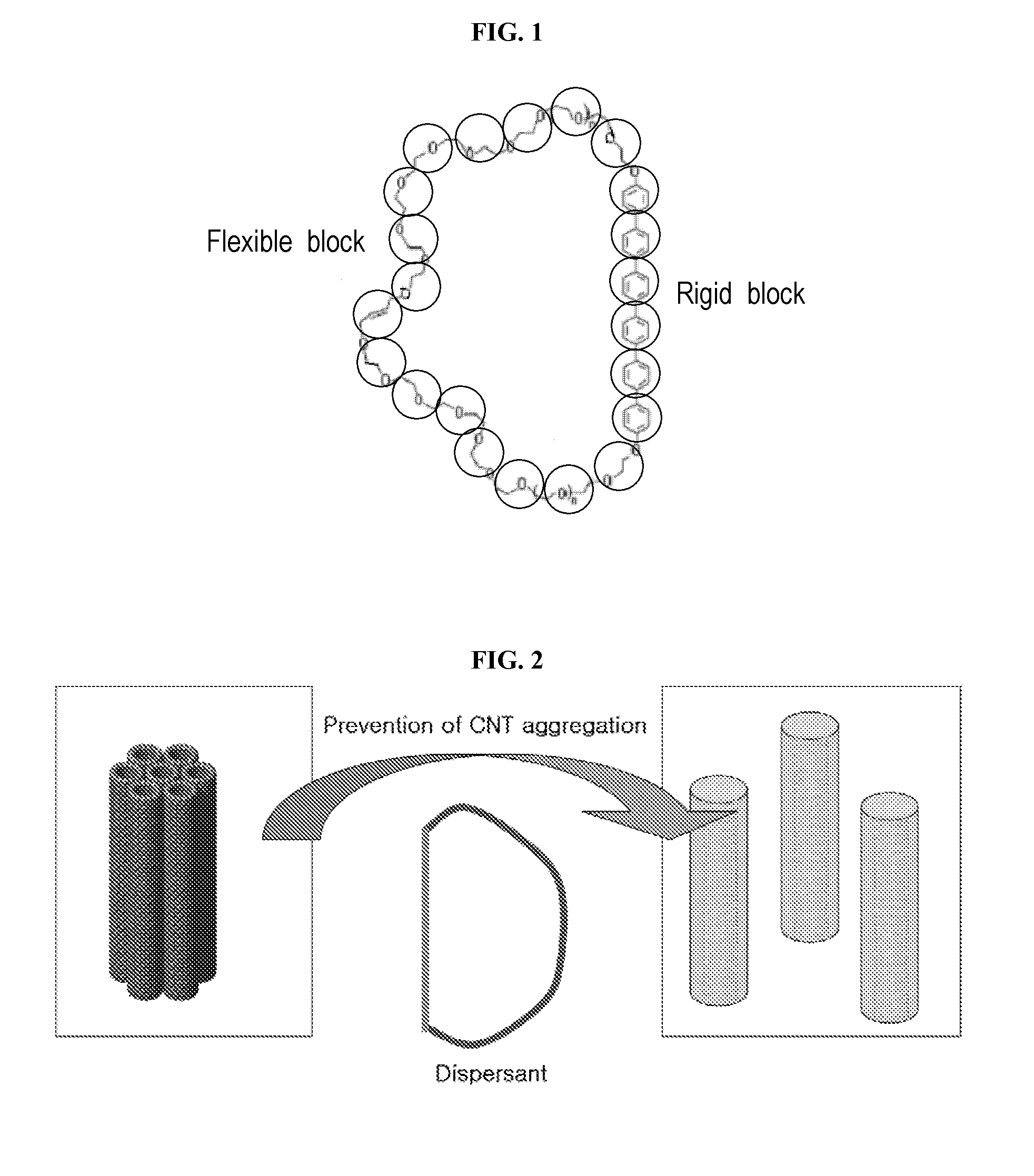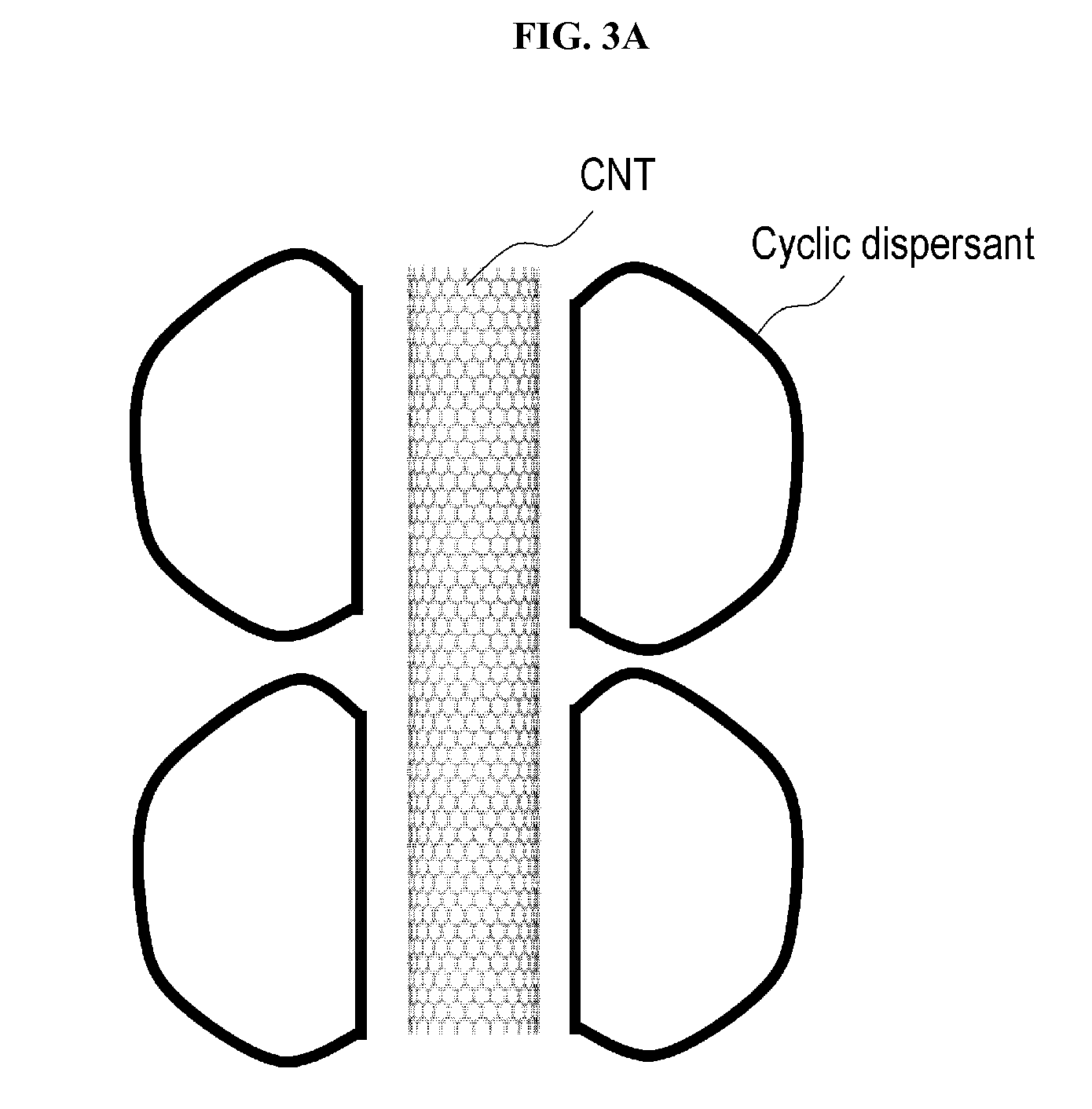Dispersant for dispersing carbon nanotubes and carbon nanotube composition comprising the same
- Summary
- Abstract
- Description
- Claims
- Application Information
AI Technical Summary
Benefits of technology
Problems solved by technology
Method used
Image
Examples
synthesis example
Dispersant Synthesis
[0057] A dispersant represented by Chemical Formula 5 was synthesized according to reaction scheme 1 shown below. To a solution of p-toluenesulfonyl chloride in dry methylene chloride were added poly(ethylene) glycol (Mn=600) and pyridine at about 0 degrees Celsius (20 C.). In an argon atmosphere, the mixture was mixed for about 8 hours at room temperature. The addition of a hydrochloric acid solution (5 wt %) to the reaction mixture was followed by extraction with methylene chloride. The organic phase was washed with water and dried over magnesium sulfate before evaporating the solvent in a vacuum. The crude product thus obtained was purified by silica gel column chromatography using methylene chloride / methanol (40:1 to 30:1 volume / volume) as an eluent to afford Compound A as a colorless oil (Yield: 56%).
[0058] Compound A, 4′-bromo-[1,1′-biphenyl]-4-ol, and excess K2CO3 were dissolved in anhydrous acetonitrile. The mixture was fluxed for about 24 hours, dilute...
example
[0063] About 20 milligrams (mg) of the dispersant of Chemical Formula 5, obtained in the Synthesis Example, revolutions dissolved in about 20 grams (g) of terpineol. To this solution was added 2 mg of multi-wall carbon nanotubes, which were then dispersed for about 10 hours in a sonic bath. Next, centrifugation at about 5,000 revolutions per minute (rpm) for about 5 minutes yielded a carbon nanotube solution as a supernatant. The solution was measured for absorbance at 750 nanometers (nm) using UV-Vis spectroscopy (JASCO V-560) (Absorbance mode, Scanning speed: 400 nm / min), and the results are shown in FIG. 5.
experimental example 1
Adsorption Efficiency According to Dispersant
[0066] The cyclic dispersant of Chemical Formula 6 (FIG. 6c), a di-block type dispersant (FIG. 6a,) and a tri-block type dispersant (FIG. 6b) were compared with respect to adsorption efficiency and the results are depicted in FIG. 7. In the graph, the proportion of the number of chains adsorbed on carbon nanotubes to the total number of chains used was plotted against time with respect to dispersants.
[0067] As seen in FIG. 7, the cyclic type dispersant of the present invention was superior in efficiency of adsorption to carbon nanotubes compared to the di-block type dispersant and the tri-block type dispersant. As for the di-block type dispersant (♦), self-aggregation was observed to predominate over adsorption to carbon nanotubes. The tri-block type dispersant (▪) showed better dispersibility at an early stage than did the di-block type dispersant, but its adsorption did not increase with time because it reached saturation within a rel...
PUM
| Property | Measurement | Unit |
|---|---|---|
| Percent by mass | aaaaa | aaaaa |
| Percent by mass | aaaaa | aaaaa |
| Weight | aaaaa | aaaaa |
Abstract
Description
Claims
Application Information
 Login to View More
Login to View More - R&D
- Intellectual Property
- Life Sciences
- Materials
- Tech Scout
- Unparalleled Data Quality
- Higher Quality Content
- 60% Fewer Hallucinations
Browse by: Latest US Patents, China's latest patents, Technical Efficacy Thesaurus, Application Domain, Technology Topic, Popular Technical Reports.
© 2025 PatSnap. All rights reserved.Legal|Privacy policy|Modern Slavery Act Transparency Statement|Sitemap|About US| Contact US: help@patsnap.com



